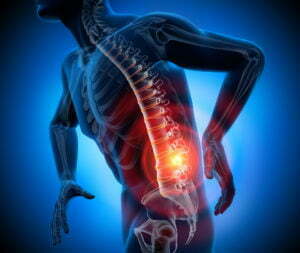03 Aug How Is Disk Herniation Diagnosed?
Disk herniation is a common occurrence amongst people in the United States. Some people may experience a slipped disk with little to no pain. However, those people who experience pain from a slipped disk generally experience a significant amount of pain. These people may miss work days, miss social activities, and miss time with their families. As a result, disk herniation is a major cause of diminished quality of life in people who experience pain from the condition. Diagnosing a herniated disk is the first step to getting it properly treated.
Slipped disks occur when the inner part of an intervertebral disk pushes through a weakened outer layer of the disk. This leads to extreme discomfort for the patient. Oftentimes, disk herniation occurs due to injury as in the case with sports or a car accident, picking up heavy boxes, or twisting and turning motions of the spine. However, it can also occur due to normal wear and tear on the body or simply being overweight.
The symptoms of a herniated disk may differ from person to person. However, there are some symptoms that tend to show up across the board. Herniated disks can occur anywhere along the spine. Patients may note feelings of pain or numbness on one side of the body, pain that runs through the arms and legs, pain that worsens at night or with certain movements, pain that worsens after standing or sitting, pain when walking short distances, unexplained muscle weakness, or tingling, aching or burning sensations around the area of the slipped disk. While all people process and experience pain differently, pain in the spine may be a sign of a herniated disk.
Accurately diagnosing a herniated disk is key to getting the patient proper treatment. If a person notices spinal pain, they should visit their doctor immediately. Physicians will do a physical exam in order to find the general area of pain and discomfort. This can include everything from checking nerve function and muscle strength to determining whether or not the patient feels pain when the affected area is moved or touched. Telling your physician when the pain started, and when you notice it worsening or getting better can also help to pinpoint whether or not the pain is due to disk herniation.
Most disk herniation diagnoses include some kind of imaging test. This can be in the form of X-rays, CT scans, MRI scans, and discograms. These imaging tests can help physicians determine the exact location of the slipped disk. By combining all of these tidbits of information, physicians are able to accurately identify whether or not the patient is suffering from a herniated disk.
Herniated disks can be extremely painful for the affected patient. Beginning treatment as early as possible can help the slipped disk from worsening, and it can help relieve some of the pain the patient is feeling. In order to accurately diagnose slipped disks, physicians will use information from patient history, a physical exam, and imaging tests to ensure a proper diagnosis.


